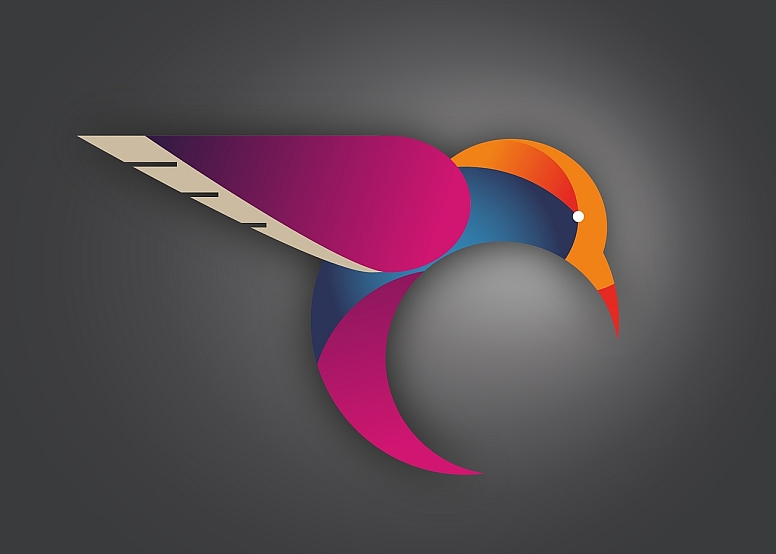
Integrating Logo Design with Websites
A logo is the visual cornerstone of a brand, representing its identity and values in a single, memorable graphic. But its role doesn’t stop at business cards or product packaging—it is deeply integrated into website design, where it becomes a key driver of branding, usability, and user experience.
Find out how logo design is woven into website development and branding, discussing animation, placement, colour schemes, and more.
Brett Stone, founder of Stone Digital, a leading Sydney web development agency explains “The harmony between a logo and website design ensures a seamless brand experience that resonates with users on every page."
The Role of Logo Design in Website Integration
1. Logo as a Branding Anchor
The logo is a visual anchor for the entire website’s branding. It sets the tone for other design elements, including typography, colour schemes, and layout. A well-designed logo communicates a brand’s essence and is the first step in building trust with your audience.
2. Logo Placement: Usability and Familiarity
The positioning of a logo on a website directly affects usability and user perception. Here’s how to do it right:
- Top Left Corner (Standard Placement): This is the most common and user-friendly position for logos. Studies show that users instinctively look to the top left corner for branding. Placing the logo here improves navigation and fosters brand recall.
- Centre Placement: Often used on minimalist sites or landing pages, centring the logo can create a sleek and modern feel. However, it’s less practical for websites with extensive navigation.
- Footer Logos: Logos are often repeated in the footer for added brand reinforcement and accessibility, especially on long-scrolling pages.
3. Colour Scheme Integration
Your logo's colours influence the website's overall colour palette, ensuring consistency and harmony. Key considerations include:
- Primary Colours: The dominant colours in your logo often form the foundation of your website’s design. For example, if your logo features blue and white, your site may adopt a similar palette for buttons, headings, and backgrounds.
- Accent Colours: Use complementary colours sparingly to highlight key elements like call-to-action buttons or links. These accents should align with the logo to maintain cohesion.
- Brand Psychology: Colours evoke emotions. For instance:
- Blue suggests trust and professionalism (common for tech and finance brands).
- Red conveys urgency or passion (great for retail or food industries).
- Green promotes sustainability and growth (ideal for eco-friendly brands).

4. Animation: Bringing Your Logo to Life
Animating a logo on a website adds a dynamic, modern touch and enhances user engagement. Web development techniques used for logo animations include:
- CSS Animations: Lightweight and efficient, CSS is often used for simple hover effects, such as making a logo slightly enlarged or changing colour when the cursor hovers over it.
- SVG Animations: SVG (Scalable Vector Graphics) allows logos to be animated smoothly, regardless of screen resolution. Developers use JavaScript libraries like GSAP to create detailed motion effects.
- Lottie Animations: These JSON-based animations are created in tools like Adobe After Effects and integrated into websites via libraries like Lottie. They offer rich, lightweight animations perfect for logos.
- Load Animations: Animated logos are often used during page-loading sequences. For instance, a spinning or morphing logo can distract users from wait times and make the site feel interactive.
5. Responsive Design for Logos
A modern website must adapt to various screen sizes, and so must its logo. Responsive logo design ensures that the logo looks professional and legible on all devices. Key practices include:
- Simplified Variations: For small screens, use a simplified version of the logo. For example, a logo with text and a symbol might display only the symbol on mobile.
- Scaling and Clarity: Use vector formats (like SVG) to ensure logos scale without losing quality.
- Alignment Adjustments: Centre-align logos on mobile for better visual balance.
6. Typography and Logo Harmony
Logos often include typography that represents the brand's voice. Extending this font to the website ensures a unified look and feel. Some guidelines:
- Consistent Fonts: Use fonts that complement your logo typography throughout the site—for headlines, buttons, and navigation.
- Accessibility: Ensure the chosen fonts, inspired by the logo, are legible and accessible across devices and lighting conditions.
- Custom Fonts: For truly cohesive branding, consider custom web fonts that match your logo’s style.
7. Building a Cohesive Brand Experience
Logos aren’t just static symbols—they interact with all elements of your website to create a holistic brand experience. This includes:
- Favicon Integration: Your logo’s symbol or initial can be used as a favicon (the small icon displayed on browser tabs) for consistent branding.
- Social Media Integration: The logo should be designed to look great across platforms, including embedded website widgets for social feeds.
- Custom Branding Elements: Extend logo design themes to other visuals, such as icons, banners, and background patterns.
The Web Development Process for Logo Integration
Here’s how web developers ensure logos are seamlessly incorporated into websites:
- Design Handoff: Developers receive the logo in multiple formats (SVG, PNG, etc.) and decide how it will be integrated into the site.
- Code Implementation: Developers use HTML, CSS, and JavaScript to position and style the logo. For animations, tools like GSAP, After Effects, or Lottie may be employed.
- Testing Across Devices: Developers ensure the logo is responsive and visually appealing on all screen sizes and browsers.
- Optimization: Large logos can slow down page load times. Developers optimize file sizes using tools like ImageOptim or TinyPNG.














